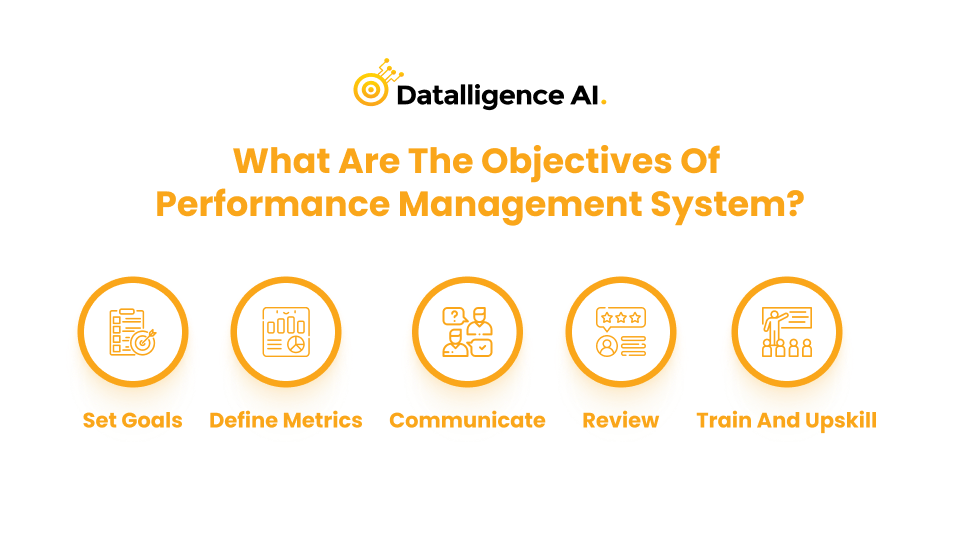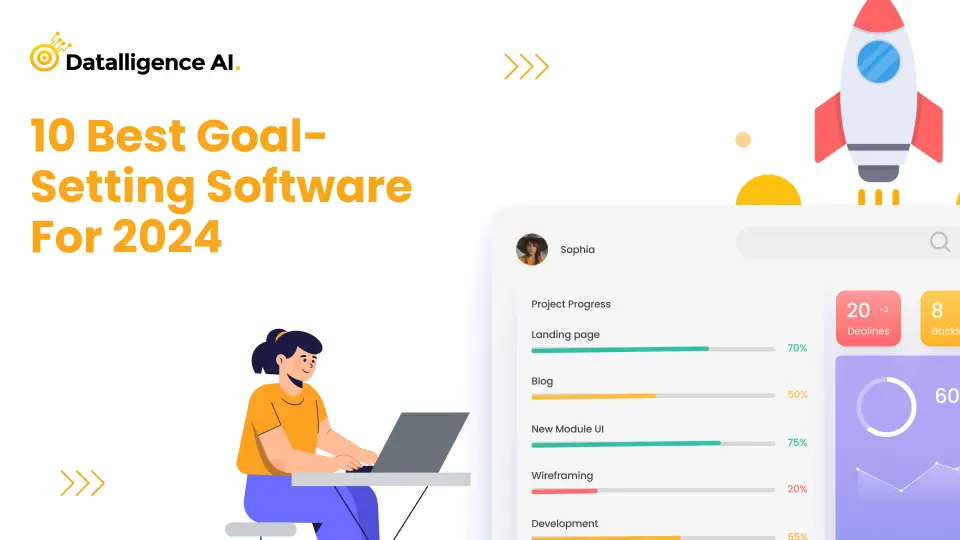In order to maintain success, businesses must make the most of their most valuable asset—their talent. When employees feel appreciated, encouraged, and supported, they work at their best, which is what the performance management function strives to do. Its three primary components—measuring and enhancing results, cultivating talent, and rewarding performance—when combined, can propel your company to new heights. Performance management can also contribute to engagement at a time when 82% of workers desire to feel more valued as individuals.
While our earlier articles talk more about the aspects of OKR and feedback, we would like to share a few insights into the objectives of performance management. Firstly, one needs to be aware of what performance management actually means.
What is Performance Management
Performance management is simply described as: “A continuous process that seeks to identify, measure, and develop the performance of the workforce periodically”
It is a process that an organization uses to assess the performance of its employees. This can include things like performance reviews, 360-degree feedback, or goal-setting and tracking systems. The purpose is to identify areas of strength and areas for improvement in order to help employees grow and develop and to ensure that they are meeting the expectations of the organization.
There is a fair chance that the organizational performance report has not met the expected level. Also, the existing performance management system is not enough to evaluate employee performance.
Instead of pushing your performance management system to the edge, a touch of redesign will bring great results.
The first step in establishing a high-performance management system that actually works is to understand the objectives behind it.
We also should pen down clear and concise objectives of a Performance Management System

Objectives of Performance Management
- Setting and defining goals to fulfill organizational objectives
- Setting the right expectations for each employee – managers and employees
- Setting Performance Standards and metrics to measure
- Establishing effective communication channels between managers and subordinate
- Determining training plan.
- Review the process periodically.
1. Setting and defining goals to fulfill organizational objectives
Goal setting is the most profitable way for initiating better performance among employees. It has been constantly demonstrated that effective goal setting
- allows employees to focus on what’s important.
- aligns individual objectives to the business objectives.
- optimizes employees’ individual performance.
- helps to identify the Key Results and work upon delivering them.
An efficient performance management system will ensure that goal setting is one of its integral requirements. As an employee/manager, one should set goals that benefit both- employee performance and business performance.
Curious about the best OKR software for 2023, Read more in Best OKR Software 2023
2. Setting the expectations right for each employee – managers and employees
An efficient performance management system should set expectations right for each employee – managers and employees. As a manager, it’s crucial that you place manageable expectations from your employee. It is absurd to expect a poor performer to start giving good results right away. Or a star performer to stay consistent every other week.
Similarly holding managers to high expectations will only bring in poor management decisions.
How then do we set expectations to bring in desired results?
- Define the expectations of your employees in clear terms and communicate the same. Get acknowledgment to avoid any misinterpretation
- Document expectations and the progress towards them periodically. Review conversation and feedback are very important without which any performance management system will only be a check-in-the-box activity.
- Once every employee understands his/her roles, responsibilities, and accountabilities they are more consistent and productive.
This will facilitate better business performance and also encourage the personal development of the employee.
3. Setting Performance Standards and metrics to measure
Once the goals are set and communicated, there have to be set standards for deliverables. There should be metrics to measure the objectives defined and keep it simple. They have to be realistic and in line with the industry practice and most importantly ensure the deliverables are adding to the company objectives.
4. Establishing effective communication channels between managers and subordinate
There is a long-existent gap in most PMS which is a lack of conversation between managers and their team members. It is not a standalone activity to achieve rather as a team they need to contribute to the overall organizational goals. Hence it is important to communicate and have discussions regularly. This would give the employee an understanding of how well he has been doing and how to prioritize the remaining goals.
This is possible through conversations being done periodically. This channel also gives an opportunity to both – the managers and the team member to have a better connection and address many other employee issues that may be underlying. Not just addressing issues, but also identifying HiPos at an earlier stage is possible. There is always room for improvement and a need for up-skilling among the employees. All of these can be addressed through a proper communication channel.
5. Determining training plan.
As it is important to fuel our vehicles for better efficiency, it is highly important to upskill your employees in order to perform with better efficacy. Among the practices prevalent in the industry for recruiting talent which is Build-Buy-Borrow, what could be more cost-efficient than cross-department training. This ensures the skill available within the organization is shared with a larger talent pool. This ensures the knowledge is not vested in only one/few talents rather the talent pool is larger.
This also ensures lower dependency and identifies talent and better means of engagement and recognition.
6. Review the process periodically.
Once the system is functioning well, it needs to be counter-checked to avoid any missed chances. There should be a regular audit of the reports and fine-tuning of the process and system for at least 3 years once. This not only eradicates the loopholes but also allows for alignment with the industry practice.
Conclusion
You can accomplish so much more within your business while using a solid performance management system. A solid performance system acts as a tool to attain the goals of each individual worker whilst also reaching the overall goals of the company. With OKRs helping you to track and access the performance of each employee, it is more likely to end on a successful note. Talk to our coaches and experts to gain more insights on performance management and OKR.











